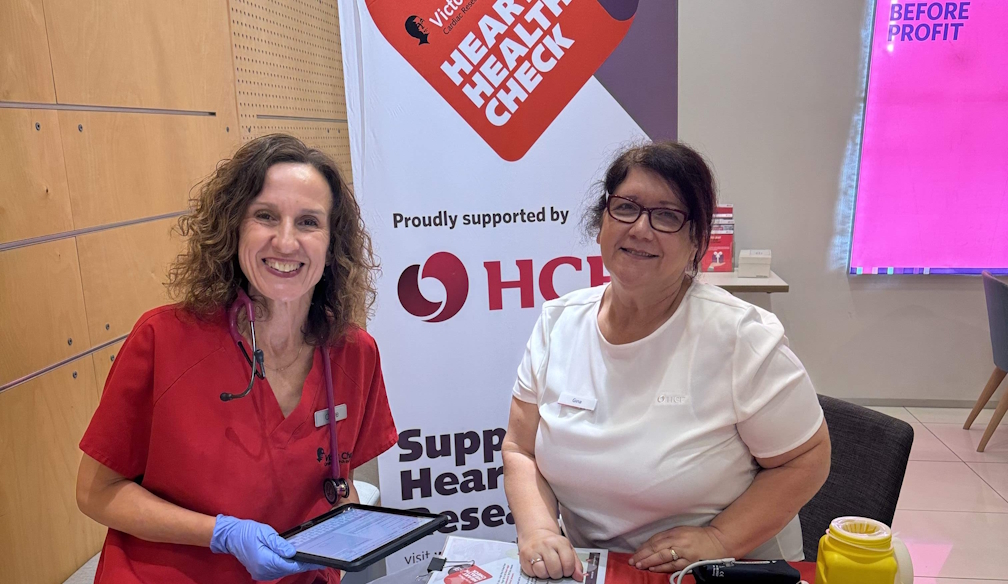HCF’s Healthy Hearts Roadshow Wraps Up 2024 with a Final Regional Sprint
- Written by The Times

Next week marks the final leg of the HCF Healthy Hearts Roadshow for 2024, bringing free heart health checks to some of NSW’s most vibrant regional communities. As Australia’s largest not-for-profit health fund, HCF has partnered with the Victor Chang Cardiac Research Institute to deliver these critical screenings to eligible HCF members, empowering regional Australians to take charge of their heart health.
The roadshow will visit Orange on Monday (25/11), Dubbo on Tuesday (26/11), Tamworth on Wednesday (27/11), Coffs Harbour (28/11) on Thursday, and Port Macquarie on Friday (29/11) before concluding for the year, with plans to recommence in 2025 to continue its mission of improving heart health nationwide.
A Grim Reality for Regional Australians
Cardiovascular disease remains the leading cause of death in Australia, responsible for one in four fatalities nationwide. However, for regional Australians, the odds are even more concerning. They are 1.3 times more likely to be hospitalised for heart disease and face a 90% higher mortality risk from high blood pressure-related conditions compared to their urban counterparts.
Professor Jason Kovacic, cardiologist and CEO of the Victor Chang Cardiac Research Institute, underscores the importance of addressing this disparity: “Cardiovascular disease remains Australia’s number one killer, and regional Australians are disproportionately affected. The HCF Healthy Heart Roadshow allows us to deliver vital heart health checks that can help identify risks early and save lives.”
Removing Barriers to Prevention
The roadshow is part of a broader effort to tackle healthcare inequities in regional Australia, where barriers such as limited access to preventive services and the burden of economic and environmental stressors weigh heavily.
Julie Andrews, HCF’s Chief Officer of Member Health, said the initiative is designed to bring health care closer to communities often left behind.
“We know that our members in regional areas face unique challenges when it comes to healthcare. This roadshow is about making heart health checks more accessible, so members can understand their risk and take action to protect their future health.”
Quick, Simple, and Potentially Lifesaving
The heart health checks take less than 10 minutes and measure key risk factors like blood sugar, cholesterol, and blood pressure.
Participants receive a personal heart health snapshot with follow-up recommendations, and those identified as higher risk are referred to HCF’s free health and wellbeing programs or encouraged to consult their GP.
Professor Kovacic emphasises the importance of early detection: “Knowing your numbers – blood pressure, cholesterol, and blood sugar – can help prevent heart attacks and strokes.”
How to Take Part
For eligible HCF members in Orange, Dubbo, Tamworth, Coffs Harbour, and Port Macquarie, this is your last chance in 2024 to take part. Don’t miss this opportunity to know your numbers and protect your heart. Spaces are limited, and appointments are essential.
To book your free heart health check, visit hcf.com.au/victorchang.
As the Healthy Hearts Roadshow wraps up its 2024 journey, it leaves behind a powerful reminder: small, preventive steps can save lives, especially in communities where access to health services is limited.
With plans to return in 2025, HCF and the Victor Chang Cardiac Research Institute remain committed to making heart health accessible for more Australians.
Location specifics:
Date: Monday, 25 November - Orange
Time: 9am – 2:10pm
Location: Orange City Centre shopping mall, 190 Anson St - Opposite the Reject Shop & Suzanne Gray as a pop-up site.
Date: Tuesday, 26 November - Dubbo
Time: 9am – 2:10pm
Location: Orana Mall Shopping Centre, 56 Windsor Parade - In front of Connor - close to Woolworths, JB Hi-Fi HOME and Bay Audio.
Date: Wednesday, 27 November - Tamworth
Time: 9am – 3:10pm
Location: HCF Tamworth Branch – Shop 3, Tamworth Square, 432-452 Peel St
Date: Thursday, 28 November - Coffs Harbour
Time: 9am – 3:10pm
Location: HCF Coffs Harbour Branch – 3 Harbour Drive
Date: Friday, 29 November - Port Macquarie
Time: 9am – 3:10pm
Location: Port Central, 40 Horton St, near Flight Centre, Tarocash & Smiggle on the ground floor

















